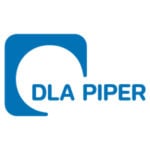-
What forms of security can be granted over immovable and movable property? What formalities are required and what is the impact if such formalities are not complied with?
The type of security granted over an asset in England and Wales largely depends on whether legal title (i.e. ownership in the ordinary sense) to the secured asset is intended to be transferred to the secured party. Security can be in the form of a mortgage or security assignment (transfer of title, security provider retains possession) or a charge (no transfer of title, security provider retains possession). There are also other types of security which apply where the secured party is in possession of the secured asset, e.g. liens and pledges.
Mortgages: To create a mortgage, the legal or beneficial title to the secured asset must be transferred to the security-holder. Mortgages are most commonly granted over real estate, but are also seen in movable property such as ships and airplanes. In respect of real estate, legal mortgages must be in writing and executed as a deed by the security provider (the mortgagor). To take effect as a legal mortgage, a mortgage over registered title must be registered at the Land Registry. If the security is not registered, it will usually take effect as an equitable mortgage, which can undermine the strength of the security in the case of competing claims. Different registration formalities may be applicable depending on the secured asset.
Assignment: Receivables and rights in insurance policies and material contracts are often assigned absolutely to a secured lender by way of security. The benefit of an absolute assignment is that ownership is transferred in full, and the secured lender would not need to join the grantor into any enforcement action.
Notice must be given to the counterparty for the assignment to be a legal assignment, otherwise the assignment will be an equitable assignment. The primary consequence of an equitable assignment is that the assignee cannot sue the counterparty in their own name and must join the assignor as a party to any enforcement action.
If, in a purported assignment, the relevant debtor has generally retained rights in respect of the assigned property and been free to exercise those rights and deal with the policies or contracts, then it is likely that the security would be re-characterised as a charge, and potentially a floating charge (see the discussion of fixed vs floating charges below).
Charges: A charge may be either “fixed” or “floating”; secured lenders will usually aim to ensure that as much of their security is fixed as possible, and then obtain a floating charge over any remaining assets. A fixed charge requires the security provider (the chargor) to hold the charged asset (e.g. shares) to the order of the secured party (the chargee); while a floating charge permits the chargor to deal with the assets in the ordinary course of business until the point at which it crystallises on the occurrence of a pre-agreed trigger, which is usually an event of default or acceleration of the secured debt (the floating charge hovers above a shifting pool of assets such as cash, stock and inventory). Charges are easier to grant than legal mortgages as there are fewer formalities involved. Charges must be in writing and signed by the security provider.
Whether a charge is fixed or floating will depend on a number of factors, including the parties’ intention; the characteristics of the security granted; and, if the contractual position has not been adhered to in practice, potentially also the post-contractual conduct of the parties, rather than the label which the parties have attached to the relevant security. In certain circumstances, it is therefore possible for a purported fixed charge to be re-characterised as a floating charge. This determination will be highly fact-specific. These points were explored in the recent case of Avanti Communications Ltd, Re [2023] EWHC 940 (Ch).
Registration and formalities: Security granted by an English company or limited liability partnership must be registered at Companies House within 21 days of creation or it will be void against a liquidator, administrator and any creditor of the company. Other types of security, e.g. over intellectual property, aircraft, ships or vessels, oil rigs, rail assets, etc, require further registration formalities; as mentioned above, certain mortgages and charges over interests in land must be registered with the Land Registry and executed as a deed.
-
What practical issues do secured creditors face in enforcing their security package (e.g. timing issues, requirement for court involvement) in out-of-court and/or insolvency proceedings?
Enforcement options depend on the nature of the security and the provisions of the security document, amongst other matters. Enforcement in England typically takes one of the following forms:
- appointing a receiver of the secured asset;
- appointing an administrator to the chargor;
- using a power of sale; or
- in the case of financial collateral, appropriation.
Receivership: There are two main types of receivership under English law: (a) fixed charge receivership, and (b) administrative receivership.
Fixed charge receivership: A secured creditor may enforce its security by appointing a receiver (usually an insolvency practitioner) over the specific secured asset(s), in accordance with the terms of the security document. The appointment can be made without court involvement. Following the appointment, the receiver will usually have broad powers specified in the security document, including to collect in any income from the asset and to sell it. One of the key benefits of receivership is that the receiver’s primary duty is to its appointer. The receiver’s broader duties are to act in good faith and deal fairly and equitably. Any excess proceeds from realisation of the charged asset must be returned to the chargor or otherwise applied in accordance with the relevant finance documents.
Administrative receivership: Prior to 2003, administrative receivership used to be a primary remedy for floating charge holders with security over the whole or substantially the whole of the company’s property. However, since 2003 (following the implementation of the Enterprise Act 2002), administrative receivership has been abolished as a remedy for holders of floating charges created post-15 September 2003, except in certain limited circumstances (such as floating charges (i) securing a capital market arrangement including a debt of at least £50 million, (ii) granted by certain regulated utility companies or public-private companies, or (iii) granted by a project company and securing debts in respect of the project of at least £50 million). Administrative receiverships are now very rare in practice. A secured creditor may appoint an administrative receiver (who must be a licensed insolvency practitioner) over the company’s assets (where they have charges over the whole or substantially the whole of the company’s property including at least one floating charge), provided one of the exceptions to the prohibition applies. Following the appointment, the administrative receiver will have the powers conferred on it by the Insolvency Act 1986, as well as the powers specified in the security document, which will typically give the administrative receiver the power to take custody of the assets, run the company’s business and dispose of the assets in order to repay indebtedness owed to the secured creditor(s) who appointed them.
Administration: If a creditor has security over the whole or substantially the whole of the company’s property (including at least one qualifying floating charge), it may constitute a “qualifying floating charge holder” (or “QFCH”). A floating charge will be a ‘qualifying floating charge’ (or “QFC”) if it states that paragraph 14 of Schedule B1 of the Insolvency Act 1986 applies to it or if it gives the secured party a right to appoint an administrator (or an administrative receiver).If the underlying security document excludes certain assets from the floating charge, this may erode the QFC and impair the ability to appoint an administrator. Once their security becomes enforceable, a QFCH may appoint an administrator (who must be a licensed insolvency practitioner) over the chargor to realise assets quickly and easily without going to court. This is a popular enforcement option as it creates a statutory moratorium on most other enforcement action against the chargor (see also Question 9. below) and potentially allows a sale of the business as a going concern, thereby maximising value. There is no English reported case law on what the threshold for having security over ‘substantially the whole” of the company’s property is. However, the context suggests that it must mean less than 100% but still a significant percentage of the company’s assets. Consideration should be given when seeking to appoint an administrator as a QFCH with security over less than 100 per cent. of a company’s assets.
Power of sale: A creditor may also exercise its power of sale under the security document (if they have a legal mortgage or if the terms of the security document otherwise permit). This permits the creditor to sell the secured asset, without needing to apply to court (unless the creditor is selling to itself), and use the proceeds to settle the secured liabilities. A receiver or a creditor selling secured assets is obliged to get the best price reasonably obtainable in the circumstances; no public auction is required unless specified in the security document. One advantage of appointing a receiver is that the lender is not usually responsible for the receiver’s conduct.
Appropriation: Where the security constitutes a “financial collateral arrangement”, under the Financial Collateral Arrangements (No. 2) Regulations 2003, the enforcement option of appropriation is available. “Financial collateral” includes cash and financial instruments (including shares); the security arrangement must constitute the requisite degree of “possession or control” to qualify as a “financial collateral arrangement”, but need not be a fixed charge. The remedy of appropriation permits the secured creditor to appropriate (essentially, take possession of) the financial collateral, without applying to court. The power depends on the terms of the security document. If the value of the financial collateral appropriated exceeds the secured debt, the secured creditor must account to the security provider for the excess.
Foreclosure: In theory, the possibility of foreclosure constitutes an additional enforcement option, entailing the extinguishment of a mortgagor’s equity of redemption, but this is uncommon in practice because it is time-consuming, expensive and results in the secured lender losing the right to claim the secured debt, meaning it should only be considered where the mortgagor is over-secured.
Termination of other agreements: Ipso facto clauses (i.e. clauses that allow one party to a contract to terminate, or impose altered terms, solely on the basis of the counterparty becoming subject to a relevant insolvency procedure, as set out in the Insolvency Act 1986) are prohibited in supply contracts for goods and services (but not financial services) where there is a continuing obligation to supply, as well as in relation to contracts for “essential supplies”. In these cases, suppliers of goods or services are unable to rely on contractual clauses allowing for termination in the event of the counterparty’s insolvency or restructuring (now including if such counterparty is subject to a restructuring plan or standalone moratorium available under Corporate Insolvency and Governance Act 2020 (“CIGA 2020”). However, this restriction does not extend to schemes of arrangement. In addition, it is possible to terminate before the insolvency proceeding due to a breach of the agreement, but post-insolvency termination may not occur in respect of pre-insolvency breaches. It is also possible to terminate pursuant to any termination right that arises after the insolvency proceeding began, but that is not a termination right triggered by the occurrence of the insolvency proceeding itself. There are some exemptions, for example a supplier may apply to court to terminate a supply contract on the grounds of hardship.
-
What restructuring and rescue procedures are available in the jurisdiction, what are the entry requirements and how is a restructuring plan approved and implemented? Does management continue to operate the business and / or is the debtor subject to supervision? What roles do the court and other stakeholders play?
In addition to administration and company voluntary arrangements, discussed at Question 8. below (these are insolvency proceedings which can also be considered restructuring/rescue procedures), a company may utilise a scheme of arrangement or a restructuring plan to reach a compromise agreement with its creditors whilst the existing management continue to operate the business. The restructuring plan procedure was introduced in June 2020 via CIGA 2020, which also introduced the standalone moratorium described in Question 9. below. The key difference between schemes of arrangement and restructuring plans is that cross-class cram down is possible in the latter, as explained below.
Schemes of arrangement have proven effective to implement a variety of restructurings, including amends-and-extends, standstills, debt-to-equity swaps and other comprehensive reorganisations. Given the possibility of binding a dissenting class, the restructuring plan procedure increases the possibility of compromising operational as well as financial creditors.
In both schemes of arrangement and restructuring plans, the directors of a company remain in control and there is usually no independent supervisor or monitor of the compromise if the scheme/plan is sanctioned by the court.
Entry requirements and court involvement: Both schemes of arrangement and restructuring plans are Companies Act processes, which require two court hearings, including a convening hearing followed by a sanction hearing. The availability of restructuring plans is restricted to companies in some present or likely financial difficulties affecting or that will or may affect the company’s ability to carry on business as a going concern, which the plan must be intended to eliminate, reduce, prevent or mitigate. No such requirement applies for a scheme of arrangement; it is possible to have a fully solvent scheme of arrangement, and these are frequently used for mergers, demergers and takeovers (especially public-to-private acquisitions).
The company must have a “sufficient connection” to the UK in order to propose a scheme of arrangement or restructuring plan. There is significant precedent for foreign companies taking steps to establish a “sufficient connection” specifically to be able to propose a scheme of arrangement or restructuring plan in England, and a variety of ways of doing so. Generally this is achieved by one or more of a number of techniques (see Question 17. below).
Approval threshold: Stakeholders vote in classes according to their legal rights both before and as varied by the scheme of arrangement/restructuring plan. Where creditors have a difference in legal rights against the debtor if the proposal is not approved (such set of circumstances being termed the “comparator” or “relevant alternative” for schemes and restructuring plans respectively), they may be placed into separate classes if the differences in the rights and the treatment under the proposal make it impossible for them to consult together with a view to their common interest.
For a scheme of arrangement: Every creditor or shareholder whose rights are affected by the plan must be permitted to vote. The court has discretion to sanction the scheme of arrangement (and thereby bind all affected stakeholders, whether secured or unsecured and whether or not they voted in favour, abstained, or did not participate) if the scheme of arrangement has been approved by at least 75% in value and over 50% by number of those voting in each class.
For a restructuring plan: Every creditor or shareholder whose rights are affected by the plan must be permitted to vote. However, an application can be made to exclude classes of creditors / shareholders from voting where the court is satisfied that “none of the members of that class has a genuine economic interest in the company”. The court has discretion to sanction the plan (and thereby bind all affected stakeholders, whether secured or unsecured and whether or not they voted in favour, abstained or did not participate) if the restructuring plan has been approved by at least one class which would receive a payment, or have a genuine economic interest in the company, in the event of the “relevant alternative”, provided the court is satisfied that none of the members of any dissenting class(es) would be any worse off under the plan than they would be in the event of the “relevant alternative”. A class approves the restructuring plan if at least 75% in value of those voting vote in favour of the proposal. The “relevant alternative” is whatever the court considers would be most likely to occur if the plan were not confirmed. The court’s decision in relation to this will be influenced by the valuation evidence and comparator analysis provided by the debtor, and can be an area which is closely scrutinised by the court and/or challenged by stakeholders affected by the process. The court has made it clear that the sanctioning of a restructuring plan is not a “rubber stamp” and will consider whether the restructuring plan is “just and equitable” and whether all statutory requirements have been complied with.
In the case of Re AGPS BondCo PLC [2023] EWHC 916 (Ch) – also known as Adler – the Court of Appeal laid down guidance for the exercise of the court’s discretion in the use of a cross-class cram down. In particular, it said that where a restructuring plan proposes to treat a class of creditors differently to other classes of creditors where that difference would not exist in the relevant alternative, there must be a good reason for such divergence and differential treatment (such as one class of creditor providing some additional benefit or accommodation to facilitate the success of the restructuring that the other class does not provide.
In the recent case of Re Thames Water Utilities Holdings Limited [2025] EWCA Civ 475 – also known as Thames Water – the Court of Appeal provided additional commentary regarding the exercise of the court’s discretion in the context of cross-class cram down, among other things. None of that commentary overturns the analysis set out in this note but is not expanded on here because at the time of writing, the judgment remains subject to an application to appeal to the Supreme Court.
-
Can a debtor in restructuring proceedings obtain new financing and are any special priorities afforded to such financing (if available)?
There is no express provision for super-priority rescue financing in an English insolvency process, such as the DIP financing regime available under the U.S. Bankruptcy Code. However, credit extended to a company in administration may be given priority over unsecured claims by virtue of classification as an administration expense.
Additionally, new debts and liabilities to which a company becomes subject during a standalone moratorium are given super priority (ranking only behind fixed charge creditors) if unpaid and if the company enters administration or liquidation within 12 weeks following the end of the moratorium. Any scheme of arrangement, company voluntary arrangement (“CVA”) or restructuring plan in that 12-week period cannot compromise such liabilities without consent (and such creditors are prohibited from voting on such a scheme of arrangement or restructuring plan, although not a CVA).
To grant new financing of super-priority or intermediate priority, an intercreditor agreement is the simplest option (with many leveraged finance structures having “evergreen” intercreditor agreements in place to facilitate the provision of senior tranches). Where it is not possible to reach agreement with existing creditors, a scheme of arrangement or restructuring plan may be used in certain circumstances to ‘cram down’ a proposal on a dissenting minority; this could include an offer of new financing to the debtor on a super-priority basis – although the super-priority or ‘priming’ status will be conditional on the proposal being sanctioned.
-
Can a restructuring proceeding release claims against non-debtor parties (e.g. guarantees granted by parent entities, claims against directors of the debtor), and, if so, in what circumstances?
Yes, in certain circumstances; historically this was most commonly seen in schemes of arrangement and now also in restructuring plans. Claims against third-party guarantors may be released or amended by the scheme of arrangement or restructuring plan if necessary for the successful operation of the scheme or restructuring plan (to avoid ricochet claims against the principal debtor). A release of claims against persons involved in the preparation, negotiation or implementation of a scheme of arrangement or restructuring plan, and their legal advisors, is also commonplace, but may be subject to greater scrutiny over the necessity and fairness of such releases, following Thames Water (see Question 16. below).
Issues might, however, arise where a scheme of arrangement or restructuring plan creditor has a more tangential claim against a third party. In the case of Oceanfill Ltd v Nuffield Health Wellbeing Ltd and Cannons Group Ltd. [2022] EWHC 2178 (Ch), the Court made it clear that, like a scheme of arrangement, it will not read into a restructuring plan third-party releases beyond those that have been expressly described in the plan and disclosed in the explanatory statement.
-
How do creditors organize themselves in these proceedings? Are advisory fees covered by the debtor and to what extent?
Since the financial crisis of 2007-2008, we have seen a rise in ad hoc creditor committees over formal co-ordination or steering committees. Ad hoc committees are self-formed groups of creditors that will co-ordinate among themselves and the debtor on the implementation of the workout. Although the size of these groups can vary (from a minority ad hoc committee to one that holds substantially all the liabilities of a debtor), the crucial difference between an ad hoc committee and a more formal co-ordination or steering committee is that the former may act unilaterally, and is not necessarily representative of the wider stakeholder classes. Within this reduced scope, ad hoc committees can often act more quickly and more flexibly (but may only speak for one part of the capital structure).
An ad hoc committee will usually need to engage legal and financial advisers. It is market custom (and often required in legal documentation) that the debtor pays the costs of creditors in connection with an event of default or in connection with any protection or enforcement of the security or more generally their rights under the relevant debt documents. This is usually memorialised in any waiver or new documentation entered into with the debtor in connection with the workout. Where an ad hoc committee of creditors is formed, and takes the lead in negotiating and supporting a restructuring, the debtor will typically agree to pay the ad hoc committee’s adviser fees and a fee to the ad hoc committee for the hours that they have dedicated to the restructuring process (a work fee).
-
What is the test for insolvency? Is there any obligation on directors or officers of the debtor to open insolvency proceedings upon the debtor becoming distressed or insolvent? Are there any consequences for failure to do so?
Test for insolvency: “Insolvency” is not expressly defined under English law but can generally be demonstrated if:
- a debtor is unable to pay its debts as they fall due (the “cash flow” test); or
- its liabilities (including contingent and prospective liabilities) exceed its assets (the “balance sheet” test).
A company will also be insolvent if it fails to comply with a statutory demand for a debt of over £750 (which must be liquidated and undisputed) in the 21 days after service, or if it fails to satisfy a judicial enforcement process (including a bailiff or High Court enforcement officer taking control of the debtor’s goods) relating to a judgment debt. A foreign judgment debt cannot be automatically enforced or demanded in England and Wales; instead, the foreign judgment must first be registered in England and Wales).
Filing obligations: There is no automatic obligation under English law on directors to commence insolvency proceedings when a company is insolvent. However, directors may be personally liable if they breach certain duties, as set out in Question 16. below. For example, directors can be liable for wrongful trading if they knew or ought to have known that there was no reasonable prospect of the company avoiding insolvent liquidation or administration and, from that point, failed to take every step to minimise potential losses to creditors. There are also potential criminal sanctions for fraudulent trading (which includes where the business was carried on with the intent to defraud creditors).
Use of insolvency tests: The insolvency tests are used to establish whether:
- there are grounds for the company to enter liquidation (other than a solvent members’ voluntary liquidation) or administration;
- company was “insolvent” for the purpose of antecedent transaction claims subsequently brought by an insolvency officeholder; and
- there has been an event of default under the company’s finance documents.
-
What insolvency proceedings are available in the jurisdiction? Does management continue to operate the business and / or is the debtor subject to supervision? What roles do the court and other stakeholders play? How long does the process usually take to complete?
The key insolvency procedures are administration, liquidation (also known as winding up) and CVAs. Outside of formal insolvency proceedings, schemes of arrangement and restructuring plans (as discussed under Question 3.) have also been used to effect restructurings. The English court has held in Re gategroup Guarantee Limited [2021] EWHC 304 (Ch) that the restructuring plan procedure constitutes a bankruptcy/insolvency proceeding for the purposes of the bankruptcy exclusion to the Lugano Convention. This finding was principally on the grounds of the threshold conditions to eligibility for a restructuring plan, which require an element of financial difficulty.
Administration: This is the key insolvency procedure with a view to company rescue. Similar to the U.S. Chapter 11 regime, a company that files for administration (or gives notice of its intention to appoint administrators) has the protection of a statutory moratorium to allow it to be rescued or reorganised or its assets realised. Unlike in Chapter 11, management lose control of the company to an administrator (who must be a licensed insolvency practitioner). However, in recent years, there have been a number of high-profile “light touch” administrations, in which administrators consented to the continued exercise of management powers by the directors, subject to certain restrictions.
The objectives of an administration are, in the following order of priority, to (i) rescue the company as going concern; (ii) achieve a better result for creditors than in a liquidation; or (iii) realise some or all of the company’s assets. Objective (ii) may only be pursued if the administrator thinks objective (i) is not reasonably practicable, or that a better result would be achieved for creditors as a whole. Similarly, objective (iii) may only apply if the administrator thinks it is not reasonably practicable to achieve the first two objectives, and it will not “unnecessarily harm” the interests of the creditors as a whole.
In practice, the overwhelming majority of administrations achieve the second objective and it is exceedingly rare for a company to exit administration and continue its business in the same corporate entity. The administrator’s duties are owed to the creditors as a whole. If the administration has not come to an end within a year, the administration will end automatically unless its term is extended in advance. However, in practice, many administrations are extended beyond a year.
“Pre-pack” administrations have been particularly prevalent in the UK over the last fifteen years. This is an arrangement under which the sale of all or part of the company’s business or assets is negotiated with a purchaser (by putative administrators) prior to the appointment of administrators. Historically, the administrators have affected the sale almost immediately after appointment, without the sanction of the court or creditors. However, from 30 April 2021, substantial disposals by administrators of the company’s business or assets to connected party purchasers (defined broadly and including by reference to certain former connections) within the first eight weeks of the commencement of an administration require advance approval from either the creditors or an independent evaluator report to be produced. Additionally, administrators that implement a pre-pack must make the disclosures to creditors required via a ‘SIP 16 report’ (a standardised disclosure protocol in place for pre-packs).
Liquidation: This is a dissolution procedure involving the termination of the company (and, ultimately, its removal from the register). It involves the appointment of liquidators who collect and sell the company’s assets and distribute the proceeds to creditors (and members, in the unlikely event of a surplus); directors lose control. The liquidator (who must be a licenced insolvency practitioner) does not have any ability to trade the business. Liquidation can be: (i) compulsory (where the liquidation follows a winding-up petition presented by (inter alia) a creditor, a shareholder or the Secretary of State; or (ii) voluntary, in which case it may be (x) a creditors’ voluntary liquidation (where the company is insolvent) (“CVL”); or (y) a members’ voluntary liquidation (where the directors make a statutory declaration of solvency) (“MVL”). CVL and MVL processes are commenced out of court.
Strike-off: Dissolution and strike-off is an alternative to liquidation and involves the company’s name being removed from the company register. This method of closing a company is not typically recommended as any assets not sold or paid as a dividend will pass to the Crown Estate; it may be tax inefficient; and the closure is less orderly than liquidation by an insolvency practitioner.
Company voluntary arrangement (CVA): This insolvency procedure permits a company to make a binding compromise with its creditors. A CVA cannot compromise secured or preferential creditors without their consent. A CVA is implemented out of court unless it is challenged, which can occur within 28 days on grounds of unfair prejudice or material irregularity. A CVA requires the consent of at least 75% in value of unsecured creditors; further the CVA will not be approved if more than half of the total value of unconnected creditors vote against the CVA. In recent years, CVAs have been used extensively to compromise companies’ leasehold obligations to landlords, especially in the retail and casual dining sector.
Special regimes: A special administration is a formal insolvency procedure that is used in cases where a business provides a statutory or public service (for example water, energy or charities), or where there is a wider public interest in having a bespoke administration regime. The form of these regimes follows the general process set out in Insolvency Act 1986, but due to the nature of the industry, it is appropriate for the administrator to have modified objectives and corresponding powers to achieve those objectives (e.g. see the Bulb Energy special administration in 2021 and the Small World special administration in 2024).
-
What form of stay or moratorium applies in insolvency proceedings against the continuation of legal proceedings or the enforcement of creditors’ claims? Does that stay or moratorium have extraterritorial effect? In what circumstances may creditors benefit from any exceptions to such stay or moratorium?
Stand-alone moratorium: CIGA 2020 introduced a new, standalone, moratorium to temporarily prevent creditors taking enforcement action in order to allow an eligible company a formal breathing space to propose and pursue a rescue plan. A company is only eligible for the moratorium where it is (and remains) likely that the moratorium will result in the rescue of the company as a going concern. However, broad capital markets exclusions render most bond issuers/guarantors (which includes many businesses in the retail, hospitality and consumer-facing sectors) ineligible for the moratorium. Under the standalone moratorium (subject to certain exceptions):
- a monitor is appointed (who must be a licenced insolvency practitioner) who will oversee the moratorium;
- restrictions apply to the payment or enforcement of certain “pre-moratorium debts” for which a company has a payment holiday during the moratorium and “moratorium debts”;
- no winding-up petition may be presented or winding-up order made;
- no administration may be commenced; and
- except with court permission (which cannot be sought to enforce a pre-moratorium debt for which the company has a payment holiday):
- no steps may be taken to enforce security — with an important exception for the enforcement of financial collateral arrangements, such as security over shares;
- no proceedings / legal process may be commenced or continued against the company or its property;
- most floating charges may not be crystallised by the floating charge-holder;
- no landlord may exercise any forfeiture rights;
- no steps may be taken to repossess goods under any hire-purchase agreement; and
- the moratorium will initially take effect for 20 business days and can be extended by a further 20 business days.
A notable exception is that payments falling due under a contract involving financial services (among other excluded categories) do not benefit from the payment holiday; if they are not paid, the moratorium cannot continue because the monitor will be required to terminate the moratorium.
During the moratorium, a company is required to pay new debts/liabilities to which it becomes subject during the moratorium (moratorium debts) and certain pre-moratorium debts which do not benefit from a payment holiday (including financial debt, rent in respect of the moratorium period and wages and redundancy payments). If these amounts (other than financial debt which has been accelerated) are not paid, they will be treated as super-priority debts if the company enters administration or liquidation within 12 weeks following the end of the moratorium. Any scheme of arrangement, CVA or restructuring plan in that 12-week period cannot compromise such liabilities without consent (and such creditors are prohibited from voting on such a scheme of arrangement or restructuring plan, although not a CVA).
The moratorium generally prohibits secured creditors from appointing an administrator and enforcing their security (subject to certain exceptions, including enforcement of financial collateral arrangements).
Due to the short time period for the moratorium and the exclusion of financial contracts from the payments holiday, there has been limited uptake of the process since it has been introduced.
Moratorium in administration: An automatic and wider moratorium applies when a company is in administration (and, in some circumstances, an interim moratorium pending appointment of administrators). The administration moratorium prohibits any steps from being commenced or continued against the company and its property, except with the administrator’s consent or the permission of the court. This includes preventing any secured creditor from enforcing its security interest (unless the security constitutes a financial collateral arrangement – see Question 2. above).
Liquidation: In a compulsory liquidation, no action or proceeding can be continued or commenced except with the leave of the court. However, secured creditors with proprietary rights may be able to enforce security without permission (which may include chargees, mortgagees and beneficial owners of goods subject to a retention of title clause). In a voluntary liquidation, there is no automatic moratorium on legal proceedings against the company, although the liquidator, any contributory or creditor may apply for such relief.
None of a scheme of arrangement, restructuring plan or a CVA offers a moratorium (unless combined with the standalone moratorium or an administration). However, English courts have a general case management power to stay proceedings, which they may use e.g. to stay a winding up petition or enforcement of security where a company is in the process of a restructuring – as in the cases of Bluecrest Mercantile BV v Vietnam Shipbuilding Industry Group & others [2013] EWHC 1146 (comm), Travelodge Limited v Prime Aesthetics Limited [2020] EWHC 1217 (Ch) and Riverside CREM 3 Ltd v Virgin Active Health Clubs Limited [2021] EWHC 746 (Ch).
Extra-territorial effect of moratorium: Unlike in the U.S., a moratorium under English law does not purport to have extraterritorial effect. Its recognition under the laws of another jurisdiction will depend on applicable national law. In order for English insolvency procedures to be recognised in the U.S., Chapter 15 proceedings need to be pursued. A U.S. court will generally provide recognition under Chapter 15 provided that fundamental standards of procedural fairness and due process have been upheld during the relevant English insolvency process.
-
How do the creditors, and more generally any affected parties, proceed in such proceedings? What are the requirements and forms governing the adoption of any reorganisation plan (if any)?
Schemes of Arrangement / Restructuring Plans: The party proposing the process (which in almost all cases is the scheme company or the plan company although can in theory also be commenced by a creditor, member, liquidator or administrator) typically books court dates for a convening hearing and a sanction hearing before formally commencing the process by filing a claim form at court. About four weeks before the convening hearing, the applicant should circulate a Practice Statement letter (also known as the “PSL”) to the affected creditors/members. The PSL must include a description of the proposal, a description of the company and (in the case of a restructuring plan) its financial difficulties, the reasons for the process, the terms of the scheme or plan document, a description of the relevant alternative or comparator and the next steps in the court process.
The applicant must then file a claim form at court, usually five to ten days prior to the convening hearing, following which the convening hearing will be formally listed.
The debtor will file evidence ahead of the convening hearing and this must address:
- points of jurisdiction (which will include a sufficient connection to England and Wales and for a restructuring plan will include ‘Condition A’, that the company has encountered or is likely to encounter financial difficulties that are affecting or will or may affect its ability to carry on business as a going concern, and ‘Condition B’, that there must be a compromise or arrangement proposed between the company and its creditors/members, or any class of them, , the purpose of which is to eliminate, reduce or prevent or mitigate the effect of any of the financial difficulties in question);
- class composition; and
- any steps taken to advertise the PSL to its creditors/members, as well as any responses received.
- The applicant should also be prepared to request directions from the judge.
The applicant should also file a draft explanatory statement to be approved by the court which sets out sufficient information for creditors/members to make an informed decision on the proposal, as well as witness evidence (usually from a director), an expert valuation report, and a draft of the scheme or restructuring plan document.
At the convening hearing, if the judge accepts the applicant’s evidence, they will order class meetings to be convened – usually a minimum of three weeks later, and often to take place virtually. The applicant then must distribute the finalised explanatory statement to all affected creditors/members, together with voting/proxy forms head of the class meetings. The sanction hearing will also be listed, sometimes conditionally on whether the class meetings vote in favour of the proposal. The sanction hearing will generally be listed for one to three weeks after the class meetings.
If the prerequisite majority in each class (or, in the case of a restructuring plan, at least one in-the-money class) approves the proposal, the sanction hearing will proceed. See Question 3. above for the details of the approval thresholds. The meetings will be run by a chairperson who will often be a solicitor or licenced insolvency practitioner. The debtor should prepare evidence that the meetings were properly called – this may be covered in a further witness statement from a director or from the chairperson.
At the sanction hearing, the judge will consider:
- compliance with the convening order; parties who do not comply may be required to apply for relief from sanctions in order to rely on evidence;
- any further arguments as to jurisdiction, not already considered at the convening hearing;
- if every class has approved the proposal, whether to sanction the proposal, which will include considering whether the classes were fairly represented and whether an intelligent and honest member of each class could reasonably have approved the scheme, as well as whether there is any other ‘blot’ on the scheme or the plan; and
- in the case of a restructuring plan, if any class(es) have not approved the proposed plan, whether to cram such class down. See Question 3. above for the considerations that will be relevant to the court’s discretion to implement a cross-class cram down.
If the proposal is sanctioned, it will then be filed at the company registry (the plan effective date) and should be implemented in accordance with its terms. When the documents implementing the plan become effective (the plan effective date), creditors should be duly notified.
Administration: There are two methods of placing a company into administration: in-court and out-of-court.
Placing a company into administration using the in-court route simply means that an application is filed with the court requesting the court to make an administration order (much like the process for a winding-up order following the presentation of a winding-up petition – see below).
Placing a company into administration using the out-of-court route means that no court hearing is necessary. This process is achieved by simply filing certain prescribed documents with the court.
The shareholders or the directors (or a QFCH – see Question 2. above) can place the company into administration using the out-of-court route. A creditor who is not a QFCH cannot do so but they can apply to the court to place a company into administration using the in-court route of appointment (as can certain other parties, such as the Secretary of State).
Where the company or its directors are using the out-of-court route, if there is no QFCH, no notice must be given to any person. Where there is a QFCH, it must be given five business days’ notice of any out-of-court appointment (and the proposed choice of administrator) by the shareholders or directors. This notice is the ‘Notice of Intention to Appoint and Administrator’ and starts an interim moratorium until the appointment of the administrator takes effect (at which point the moratorium becomes final) or a certain time period from the filing of the notice of intention to appoint administrators lapses.
The Notice of Intention must be filed at court. It is possible to file multiple Notices of Intention (although the company must have a settled intention to actually appoint administrators).
Any QFCH may ‘trump’ the appointment by appointing their own choice of administrator during this five-business-day-period (and an earlier QFCH can trump a later one). In practice, most administrations where the debtor and its major creditors are aligned will involve out-of-court filings by the directors with the QFCH’s consent and the filings are all achieved on the same day.
The administrators are appointed by filing a Notice of Appointment of Administrators at court. As soon as possible after coming into office, administrators will send notice to all creditors, informing them that administration has been entered. The administrators will then deliver their proposal for the administration and will continue to give updates on the progress of the administration every six months. The initial proposals must be approved by a simple majority of creditors (with each pound sterling of debt representing one vote) that have submitted a proof of debt and which are taking part in the vote. It is also possible for the proposals to be approved via deemed consent.
Liquidation: Compulsory liquidation is entered pursuant to an order delivered by the court after a winding-up petition has been presented, usually by a creditor. This can be ordered on several grounds including that the company is unable to pay its debts or that it is just and equitable to wind the company up (such as where there is a management deadlock). On the making of the winding-up order, the ‘Official Receiver’ (a civil servant) acts as liquidator but, where there are sufficient assets to meet the expense, the creditors and shareholders may appoint a private liquidator. If the creditors and shareholders nominate different liquidators, the creditors’ choice prevails.
In a compulsory liquidation, disposals of the company’s property made after the winding-up petition was presented (or, if later, when the Official Receiver’s deposit has been paid) are void unless validated by the court.
CVLs and MVLs are both commenced by a resolution of the shareholders that the company be wound up. If the company is solvent and the directors swear a statutory declaration of solvency, then the liquidation will proceed as an MVL. The directors will have to swear such statutory declaration not more than five weeks before the shareholders’ meeting to resolve to wind up the company. If the liquidator finds that the company is in fact not able to pay its debts within the timeframe specified in the statutory declaration, there is a (rebuttable) presumption that the directors made the declaration without reasonable grounds. The penalty for doing so is up to two years’ imprisonment and an unlimited fine. Directors therefore must consider very carefully whether they are able to make a statutory declaration of solvency.
If the directors do not swear a statutory declaration of solvency, the liquidation will proceed as a CVL and a decision of creditors on the nomination of a liquidator must be sought within 14 days of the shareholders’ resolution. If the creditors nominate a person other than the liquidator nominated by the members, the creditors’ choice prevails.
Once placed into liquidation a stay is placed on the continuation or commencement of proceedings against the company in liquidation. The liquidator will circulate a statement of affairs to creditors once appointed and will provide a final report to creditors on the completion of the liquidation.
Liquidation is usually a termination process (although there is a process to restore liquidated companies where necessary).
Company voluntary arrangement: Debtors proposing a CVA will prepare the CVA proposal in conjunction with the nominated CVA supervisor (the nominee), who must be a licensed insolvency practitioner. The creditors will be invited to vote on the proposals and provided that 75% vote in favour and those voting against it do not represent more than 50% of unconnected creditors, in each case by value, the CVA will be passed. If passed, a CVA binds all creditors who were entitled to vote (whether or not they received notice). A CVA cannot alter the rights of preferential and secured creditors unless they agree. A CVA can be challenged for 28 days after the date of approval, on the grounds of unfair prejudice or material irregularity.
It is also possible to use a CVA to distribute assets to creditors as an alternative to liquidation. A company does not technically need to be insolvent to propose a CVA.
The required forms/documents for a CVA are:
- CVA Proposal: sets out the proposed terms of the CVA and is drafted by the party proposing the CVA, usually together with the nominee;
- Report to Court: if the nominee is not an administrator or liquidator, a report must be submitted to the court (along with a copy of the proposal and a copy of the company’s statement of affairs, or a copy of it) explaining that, in the supervisor’s opinion, the proposal should be considered by the company’s creditors and member;
- CVA Document: sets out the terms of the CVA as approved by the creditors; and
- Final Report: on conclusion of the CVA, the supervisor must send a final report to all creditors.
-
How do creditors and other stakeholders rank on an insolvency of a debtor? Do any stakeholders enjoy particular priority (e.g. employees, pension liabilities, DIP financing)? Could the claims of any class of creditor be subordinated (e.g. recognition of subordination agreement)?
General ranking: On the insolvency of a debtor, proceeds from the realisation of assets must be distributed by an insolvency practitioner, in simple terms, as follows: fixed charge holders; expenses in the insolvency proceedings; preferential creditors; prescribed part creditors; floating charge holders; unsecured creditors’ statutory interest on provable debts; subordinated creditors (in accordance with the terms of the subordination agreement/provision); and finally, shareholders. Where winding-up/administration proceedings are begun within 12 weeks following the end of any new, standalone, moratorium, unpaid moratorium debts and unpaid priority pre-moratorium debts (see Question 7.) are paid after fixed charge holders but in priority to all other categories.
Preferential creditors: Preferential creditors include certain (limited) employee remuneration claims and, since 1 December 2020, HMRC (the UK tax authority) in respect of certain tax debts, including VAT and PAYE. In addition, a “prescribed part” is carved out of the proceeds of floating charge realisations, which is made available to satisfy unsecured debts, up to a cap of £600,000 (or, where the relevant floating charge was created on or after 6 April 2020, £800,000); the increased cap also applies where the relevant floating charge was created before 6 April 2020 if a later floating charge (over any of the company’s assets) ranks equally or in priority.
Equitable subordination: There is no concept of equitable subordination in England and Wales.
-
Can a debtor’s pre-insolvency transactions be challenged? If so, by whom, when and on what grounds? What is the effect of a successful challenge and how are the rights of third parties impacted?
Certain pre-insolvency transactions may be challenged under the Insolvency Act 1986.
Grounds of challenge: Possible grounds for challenge include transactions at an undervalue, preferences, extortionate credit transactions, transactions defrauding creditors and property dispositions after the commencement of a winding up. Each of these grounds essentially aims to unwind transactions that would otherwise have frustrated or allowed the company to avoid the payment of creditors on insolvency in accordance with the statutory priority of claims. In most cases, only an administrator or liquidator of a company may bring a claim challenging a reviewable transaction (although claims for transactions at an undervalue and preferences can be assigned by the officeholder to any third party). However, where a transaction defrauding creditors has occurred, any party prejudiced by that transaction may apply to the court for an order clawing back the assets subject to the transaction. Additionally, any floating charge made within the relevant look-back period will automatically be void to the extent that the value of the charged assets exceeds the consideration or reduction of debt received in exchange for the floating charge.
Look-back period: The look-back period may vary depending on whether the transaction was with a connected party (including directors, shadow directors, and associated persons and companies). For example, for transactions at an undervalue, the look-back period is two years prior to the commencement of administration or liquidation, or for unlawful preferences, it will be six months prior to the commencement of administration or liquidation (two years in the case of a preference to a connected person). There is often a requirement that the relevant transaction was made at a time when the company was insolvent or became so as a consequence of the transaction.
Court order / impact on third parties: The court generally has a wide discretion to make any order it thinks fit for restoring the position to what it would have been but for the relevant antecedent transaction. There are protections for third parties who acted in good faith, for value and without notice of the relevant circumstances.
-
How existing contracts are treated in restructuring and insolvency processes? Are the parties obliged to continue to perform their obligations? Will termination, retention of title and set-off provisions in these contracts remain enforceable? Is there any ability for either party to disclaim the contract?
The general rule is that a company’s contracts remain enforceable upon insolvency. Properly drafted, a retention of title clause will survive an insolvency filing.
Reliance by suppliers on ipso facto clauses (see Question 2. above) – clauses that allow one party to a contract to terminate, or impose altered terms, solely on the basis of the insolvency of the counterparty – in contracts for the supply of goods and services is prohibited where the counterparty becomes subject to a relevant insolvency procedure (including the restructuring plan and the moratorium, but not including a scheme of arrangement). Furthermore, the supplier may not (i) take action in respect of breaches of contract prior to the commencement of the relevant insolvency process or (ii) make payment of outstanding amounts (in respect of supplies made prior to the insolvency trigger) a condition of continuing supply. This does not prohibit termination for other breaches or in accordance with the terms of the contract. Certain exceptions apply e.g. for financial services contracts and contracts related to aircraft equipment.
There is also an ‘anti-deprivation’ principle which prohibits any contract from providing that property will transfer to another on the occurrence of an insolvency event.
In a liquidation or a distributing administration, statutory set-off applies where a creditor of the insolvent company is also a debtor of the company. Set-off is mandatory and automatic, and the relevant rules supersede all other contractual rights of set-off that are inconsistent with them.
A liquidator (but not an administrator) has the power to unilaterally disclaim onerous executory contracts to avoid incurring future liabilities. Prior to initiating a restructuring plan, a company may seek to terminate contracts and compromise any damages in the plan, although this may impact the fairness of the plan.
-
What conditions apply to the sale of assets / the entire business in a restructuring or insolvency process? Does the purchaser acquire the assets “free and clear” of claims and liabilities? Can security be released without creditor consent? Is credit bidding permitted? Are pre-packaged sales possible?
An administrator or liquidator can sell assets free and clear of security either with the relevant security-holder’s consent or with a court order (provided that the proceeds are used to discharge the sums secured by the security). The advance consent of the security holder may be included in an intercreditor agreement or deed of subordination; a careful review of the specific drafting will be necessary.
Unlike in a solvent sale, a buyer from an administrator or liquidator will generally be expected to acknowledge that it enters into the agreement without reliance on any warranties or representations. A buyer may also be expected to provide wide ranging indemnities to the administrator or liquidator.
Credit bidding in an administration sale process is permitted (including where the credit bidder is an assignee of the original creditor, and whether or not the administration is a pre-pack administration). However, there is no specific legislation on this point. It will be up to the administrator to decide whether a particular deal is in the best interests of the creditors and should therefore be implemented. Unsecured credit bids are possible in principle, as confirmed in Re Sova Capital Ltd [2023] EWHC 452 (Ch).
The administrators/liquidators must comply with relevant legislation and guidance, including ‘SIP 16’ in the case of pre-pack administrations (which are possible and common), which include certain marketing/valuation requirements. Greater protections/constraints apply in sales to connected parties (which is widely defined); in particular, administrators cannot make a substantial disposal of a company’s property to a person connected with the company (defined broadly and including by reference to certain former connections) within the first eight weeks of the administration, without either:
- the approval of creditors; or
- an independent written opinion obtained by the connected party purchaser; the opinion must meet certain qualifying conditions.
-
What duties and liabilities should directors and officers be mindful of when managing a distressed debtor? What are the consequences of breach of duty? Is there any scope for other parties (e.g. director, partner, shareholder, lender) to incur liability for the debts of an insolvent debtor and if so can they be covered by insurances?
Directors of an English company owe fiduciary duties to the company itself. In the case of a healthy company, directors have a duty to act in a way most likely to promote the company’s success for the benefit of its shareholders as a whole. However, the greater the financial difficulties of a company, the greater weight the directors should give to the interests of the creditors over the interests of shareholders, where those interests conflict.
The Supreme Court in BTI 2014 LLC v Sequana SA & Ors [2022] UKSC 25 held that there was no free-standing duty to creditors owed by directors, but that this is an extension of the duty to act in the best interests of the company.
Directors must consider the interests of creditors, balance them against the interests of shareholders or even give primacy to them where an insolvent liquidation is inevitable. The weight to be given to creditor’s interests will increase as the company’s position worsens.
A breach of directors’ duties may lead to directors incurring personal liability or being disqualified from acting as a director or from being involved in the management of a company for a specified period. In some instances, it may lead to a criminal prosecution.
The principal potential causes of action that may be brought are:
- misfeasance;
- wrongful trading; and
- fraudulent trading.
In addition, the liquidator may seek an order for directors’ disqualification.
Misfeasance is a claim in respect of a breach of the directors’ duties listed above (or another fiduciary duty).
Wrongful trading is established where a director knew or ought to have concluded that there was no reasonable prospect that the company would avoid insolvent liquidation or administration, and the director failed to take every step to minimise potential losses for creditors. Directors are generally most cognisant of this offence.
Fraudulent trading requires real moral blame, and it is also a criminal offence.
Liability may attach to shadow directors and de facto directors for a distressed debtor’s liabilities and in addition to financial penalties, these offences can lead to a disqualification order in respect of current and future directorships.
Liability may also extend to third parties in certain, fairly limited, circumstances. The Transfer of Undertakings (Protection of Employment) (also known as ‘TUPE’) regulations may apply when assets are purchased out of an administration: where the business is being carried on is substantially the same as before, all liabilities of employment transfer to the purchaser. This will include redundancy costs, unfair dismissal claims, or in certain circumstances, liabilities relating to defined benefit pension schemes.
The Pensions Regulator can exercise moral hazard powers over a connected third party that has acted in a way that has been materially detrimental to a defined benefit pension scheme of the debtor. The Regulator can currently issue a contribution notice against employers and their connected persons where relevant, demanding payment to remedy any shortfall in the pension scheme. Additional potential civil and criminal penalties were introduced in October 2021 under the Pension Schemes Act 2021. However, to date these measures have not been widely used.
Further, the European Commission and the Competition and Markets Authority have the power to reach behind the corporate veil when fines they have issued are left unpaid by an insolvent debtor and where there is a structural link with an economic successor entity.
-
Do restructuring or insolvency proceedings have the effect of releasing directors and other stakeholders from liability for previous actions and decisions? In which context could the liability of the directors be sought?
There is no legislative provision to release directors or other stakeholders from liability for previous actions and decisions leading up to the relevant restructuring or insolvency proceedings. However, it is common practice for extensive releases to be commercially negotiated and provided to all parties involved in the relevant proceedings within the underlying documents giving effect to the restructuring. For example, claims against third party guarantors may be released or amended by the scheme of arrangement/restructuring plan if necessary for the successful operation of the scheme of arrangement/restructuring plan (to avoid ricochet claims against the principal debtor, usually from the guarantors).
A release of claims against persons involved in the preparation, negotiation or implementation of a scheme of arrangement or restructuring plan, including directors, is also commonplace.
-
Will a local court recognise foreign restructuring or insolvency proceedings over a local debtor? What is the process and test for achieving such recognition? Does recognition depend on the COMI of the debtor and/or the governing law of the debt to be compromised? Has the UNCITRAL Model Law on Cross Border Insolvency or the UNCITRAL Model Law on Recognition and Enforcement of Insolvency-Related Judgments been adopted or is it under consideration in your country?
UNCITRAL Model Law on Cross Border Insolvency: The UK has adopted this via the Cross Border Insolvency Regulations 2006. This permits recognition of the foreign proceedings, and assistance for the foreign insolvency officeholder (including a moratorium), upon application to the court – usually a fairly predictable court procedure. The consequences of such recognition depend on the centre of main interests (“COMI”) of the debtor. Proceedings will only be recognised as “foreign main proceedings”, for which there is an automatic stay, where the proceedings are opened in the jurisdiction where the debtor has its COMI.
However – critically – such recognition does not necessarily extend to recognition/enforcement of the scheme of arrangement/restructuring plan with foreign proceedings. In essence:
- If debt (or shareholder rights) compromised under the plan are governed by English law, the English court will only recognise/enforce the compromise in respect of creditors/shareholders subject to the foreign proceedings – owing to the so-called “rule in Gibbs”.
- For these purposes, creditors will be subject to the foreign proceedings if they were present in the foreign jurisdiction when the proceedings commenced, submitted a proof of debt or voted in the proceedings (among other things).
- A parallel UK process may therefore be required to compromise the English law debt, if not all creditors are subject to the foreign proceedings and if parties require certainty.
- On 10 July 2023, the UK Government Insolvency Service announced that it would enact the UNCITRAL’s Model Law on Enterprise Group Insolvency, which will, once enacted, help to facilitate the coordination of multiple insolvency proceedings taking part in different jurisdictions in relation to companies within the same corporate group. The Government intends to implement this “at the earliest opportunity” but it is not clear how soon this will be. However, by contrast, the Government confirmed that it will not yet proceed to implement ‘Article X’ of the UNICTRAL’s Model Law on Recognition and Enforcement of Insolvency-Related Judgments, which seeks to facilitate recognition of insolvency related judgements across jurisdictions.
Rome I Regulation: This Regulation requires EU member states to give effect to the parties’ choice of law, and remains in effect with respect to the UK, despite it having left the EU. This remains a basis on which evidence may be founded as to recognition of a scheme of arrangement / restructuring plan sanction order in the EU – at least insofar as it affects debts that are governed by English law.
Lugano Treaty: The UK is not a party to the Lugano Treaty, while the 2005 Hague Convention is limited in application (as it will only apply to contracts with a symmetrical exclusive jurisdiction clause) and may not apply to restructuring plans (although it is widely understood to apply to schemes of arrangement). Therefore, for non-English-law debts, or in the case of recognition outside the EU, the UNCITRAL Model Law on Cross Border Insolvency (or other treaties) may assist, otherwise the debtor will need to rely on comity and principles of private international law.
2019 Hague Convention on Recognition of Judgments: Signed by the UK on 12 January 2024 and will come into force on 1 July 2025. The EU acceded on 29 August 2022. The 2019 Convention will provide further assistance in cases where one or more of the ‘bases’ apply.
However, the 2019 Hague Convention includes an insolvency exclusion, meaning its scope is likely to include schemes of arrangement but may not apply to restructuring plans. However, it should also be borne in mind that local courts may consider that schemes of arrangement also fall into the insolvency exclusion in the 2019 Convention or any local law enacting it.
-
For EU countries only: Have there been any challenges to the recognition of English proceedings in your jurisdiction following the Brexit implementation date? If yes, please provide details.
N/A
-
Can debtors incorporated elsewhere enter into restructuring or insolvency proceedings in the jurisdiction? What are the eligibility requirements? Are there any restrictions? Which country does your jurisdiction have the most cross-border problems with?
Yes; the jurisdictional threshold varies according to the relevant procedure, and has fairly recently expanded following the end of the Brexit transition period.
For an administration, the company’s COMI must generally be in England and Wales, or the company must have an establishment in England and Wales. For an MVL, the company must be incorporated in England and Wales.
For each of a scheme of arrangement, restructuring plan, CVA and liquidation (excluding MVL), there must be a sufficient connection to England and Wales. There are a variety of ways for a foreign debtor to access the jurisdiction for these processes, including:
- shifting a company’s COMI to England;
- changing the governing law of a company’s underlying debt documents to English law;
- adding an English company as an obligor or co-obligor in respect to the foreign company’s debt; or
- using an English guarantor of the relevant obligation.
Additionally, the potential to release thirty party with respect to the primary obligations of the company subject to a scheme of arrangement/restructuring plan, in order to avoid ricochet claims (as described in the answer to Question 16. above), extends to third parties incorporated in other jurisdictions.
-
How are groups of companies treated on the restructuring or insolvency of one or more members of that group? Is there scope for cooperation between office holders? For EU countries only: Have there been any changes in the consideration granted to groups of companies following the transposition of Directive 2019/1023?
Under English law, each company in a corporate group is treated as a single entity and its directors are required to consider the interests of creditors in relation to that particular company (rather than the group as a whole). Unlike in Chapter 11, we do not have a formal concept of group proceedings/joint debtors, or substantive consolidation. However, the commercial reality is that what is beneficial for a group is often beneficial for each individual company, and there is scope for co-ordination between affiliated entities.
Furthermore, there is provision in the Cross Border Insolvency Regulations 2006 for office holders to collaborate across jurisdictions.
-
Is your country considering adoption of the UNCITRAL Model Law on Enterprise Group Insolvency?
See response to Question 17.
-
Are there any proposed or upcoming changes to the restructuring / insolvency regime in your country?
See response to Question 17. relating to the UNCITRAL Model Law on Enterprise Group Insolvency and the UNCITRAL Model Law on Recognition and Enforcement of Insolvency-Related Judgments.
The 2019 Hague Convention on Recognition of Judgments came into effect on 1 July 2025 which may assist with enforcing English judgments (including sanction orders relating to schemes of arrangement and restructuring plans) in the countries that have acceded to it (see Question 17. above).
-
Is your jurisdiction debtor or creditor friendly and was it always the case?
The UK has historically been perceived as a creditor-friendly jurisdiction (in particular for senior secured creditors), but it is extremely effective for both creditors and debtors. The Covid-19 crisis prompted a move towards a more debtor-friendly restructuring regime, with the fast-tracking of the introduction of the restructuring plan (offering cross-class cram down to facilitate rescue), the moratorium and the restrictions on the exercise of ipso facto clauses in certain cases.
The English courts are the forum of choice for major international financial and other contracts, because the system is seen as flexible and commercially-oriented whilst also offering certainty and predictability – with considerable deference to the commercial terms agreed by the parties – and the highest possible reputation for independence / lack of corruption.
Overseas debtors have increasingly looked to take advantage of the English restructuring and insolvency framework, including taking steps to establish jurisdiction here e.g. by moving the debtor’s COMI, amending the governing law of their debt documents, or otherwise.
-
Do sociopolitical factors give additional influence to certain stakeholders in restructurings or insolvencies in the jurisdiction (e.g. pressure around employees or pensions)? What role does the State play in relation to a distressed business (e.g. availability of state support)?
Generally, the UK does not have the major sociopolitical factors impacting restructurings that exist in certain other jurisdictions. State involvement in distressed businesses is generally limited to non-existent, although there has been a recent trend for certain very large UK companies to be liquidated with the Official Receiver acting as liquidator (British Steel and Carillion in 2018 and Thomas Cook in 2019).
Certain unpaid contributions into occupational pension schemes and employee remuneration and accrued holiday entitlements are categorised as preferential debts and will rank ahead of floating charge holders in the event of a company’s insolvency. In December 2020, the Government reformed the preferential creditor regime, to make the UK tax authority, HMRC, a “secondary preferential creditor” for certain tax debts, including VAT and PAYE.
Until recently, HMRC was increasingly active in raising its objections to restructuring plans and its objections have contributed to the rejection of some restructuring plans (See Re Nasmyth Group Ltd [2023] EWHC 988 (Ch) and Re Great Annual Savings Company Ltd [2023] EWHC 1141 (Ch)). However, a recent policy change has seen HMRC take a more collaborative approach in other cases, such as Re Enzen Global Limited [2025] EWHC 684 (Ch) and Re Outsideclinic Ltd [2025] EWHC 875 (Ch), where they have ultimately supported the restructuring plans despite receiving a recovery of less than par on its claim.
HMRC issued guidance in November 2023, detailing when it will support companies restructuring their debts via a scheme of arrangement or a restructuring plan. The guidance clarifies that HMRC will consider support on a case-by-case basis, contingent on the scheme of arrangement or restructuring plan having a realistic chance of success. Key requirements include early engagement (and notification), full disclosure of relevant financial information, and an explanation of how the restructuring will succeed and benefit all creditors. Importantly, companies must ensure all tax returns are filed before HMRC will consider supporting the scheme of arrangement or restructuring plan.
The Pension Protection Fund provides compensation for defined benefit occupational pension scheme members on an employer’s insolvency. The Pensions Regulator has very wide ‘moral hazard’ or ‘anti-avoidance’ powers to make third parties liable to provide support or funding to a defined benefit occupational pension scheme in certain circumstances. Additional civil and criminal penalties for conduct putting accrued benefit schemes at risk or preventing the recovery of pension scheme debt became effective in autumn 2021. Where a restructuring plan seeks to compromise certain pension liabilities, the Pension Protection Fund will act as the creditor and vote on the plan. While this has not yet happened, it is likely that the Pension Protection Fund would oppose any restructuring which sought to reduce the entitlement of the pension creditor and that the PPF has not effectively approved prior to the restructuring plan being launched
Large pension schemes of debtors in difficulty will attract greater public attention and government intervention is more likely, e.g. by seeking to facilitate a deal between the debtor, the Pensions Regulator and unions (if any). Aside from these considerations, state involvement is generally limited.
Further, as discussed above in Question 8. above, there are special administration regimes in place for certain sectors where the industry provides a statutory or public service or supply function, such as water or energy, and the continuity of the critical service is particularly important or important to the stability of the financial system. The special objectives of the administrator usually prioritise the continued supply of the service or supply.
-
What are the greatest barriers to efficient and effective restructurings and insolvencies in the jurisdiction? Are there any proposals for reform to counter any such barriers?
There are three, in our view: the scope of the moratorium, questions of UK recognition of foreign plans of reorganisation, and questions of EU recognition of UK proceedings following Brexit.
- Scope of the moratorium:various aspects of the new moratorium render the breathing space it offers only limited in scope. As discussed in Question 22. above, the Insolvency Service published its official “Post-implementation review” on 26 June 2023 which suggests possible refinements going forward, particularly in respect of the standalone moratorium. However, there are no timescales or suggested next steps for further guidance/consultations and so it remains to be seen whether the moratorium criteria and applicability will become less limited in scope.
- UK recognition of foreign plans of reorganisation: See Question 17. above. While the UK government announced in July 2023 its intention to legislate to implement the UNCITRAL’s Model Law on Enterprise Group Insolvency at the earliest opportunity, the timing of the implementation process remains uncertain. Equally, the UK plans to consult as to whether to implement the new UNCITRAL Model Law on Insolvency-Related Judgments, but the timing and outcome of that consultation remain uncertain.
- Post-Brexit limitations on European recognition of UK proceedings: as of 1 January 2021, EU member states no longer automatically recognise UK insolvency proceedings. Recognition is a matter of the private international law regimes in each Member State. The loss of automatic recognition of UK proceedings across the EU may make it more complex, lengthy and expensive to resolve cross-border mandates, raising the prospect that parallel proceedings may be necessary if certainty is required. See for example the following restructurings that have used parallel proceedings: (i) Vroon, which used a Dutch WHOA with an English scheme of arrangement (Re Lamo Holding B.V. [2023] EWHC 1558 (Ch)), (ii) Cimolai SPA [2023] EWHC 2193 (Ch), Italian concordato preventivo with an English restructuring plan and (iii) McDermott, Dutch WHOA with an English restructuring plan (Re CB&I Ltd [2024] EWHC 398 (Ch)). To date, the English courts have taken a pragmatic approach to sanctioning schemes of arrangement and restructuring plans unless there is “no reasonable prospect of the scheme having substantial effect”, especially where there is very substantial support for the scheme of arrangement or plan. As noted in the response to Question 17. above, for debt governed by English law, Rome I is one potential route to obtaining recognition of schemes of arrangement and restructuring plans in EU member states.
United Kingdom: Restructuring & Insolvency
This country-specific Q&A provides an overview of Restructuring & Insolvency laws and regulations applicable in United Kingdom.
-
What forms of security can be granted over immovable and movable property? What formalities are required and what is the impact if such formalities are not complied with?
-
What practical issues do secured creditors face in enforcing their security package (e.g. timing issues, requirement for court involvement) in out-of-court and/or insolvency proceedings?
-
What restructuring and rescue procedures are available in the jurisdiction, what are the entry requirements and how is a restructuring plan approved and implemented? Does management continue to operate the business and / or is the debtor subject to supervision? What roles do the court and other stakeholders play?
-
Can a debtor in restructuring proceedings obtain new financing and are any special priorities afforded to such financing (if available)?
-
Can a restructuring proceeding release claims against non-debtor parties (e.g. guarantees granted by parent entities, claims against directors of the debtor), and, if so, in what circumstances?
-
How do creditors organize themselves in these proceedings? Are advisory fees covered by the debtor and to what extent?
-
What is the test for insolvency? Is there any obligation on directors or officers of the debtor to open insolvency proceedings upon the debtor becoming distressed or insolvent? Are there any consequences for failure to do so?
-
What insolvency proceedings are available in the jurisdiction? Does management continue to operate the business and / or is the debtor subject to supervision? What roles do the court and other stakeholders play? How long does the process usually take to complete?
-
What form of stay or moratorium applies in insolvency proceedings against the continuation of legal proceedings or the enforcement of creditors’ claims? Does that stay or moratorium have extraterritorial effect? In what circumstances may creditors benefit from any exceptions to such stay or moratorium?
-
How do the creditors, and more generally any affected parties, proceed in such proceedings? What are the requirements and forms governing the adoption of any reorganisation plan (if any)?
-
How do creditors and other stakeholders rank on an insolvency of a debtor? Do any stakeholders enjoy particular priority (e.g. employees, pension liabilities, DIP financing)? Could the claims of any class of creditor be subordinated (e.g. recognition of subordination agreement)?
-
Can a debtor’s pre-insolvency transactions be challenged? If so, by whom, when and on what grounds? What is the effect of a successful challenge and how are the rights of third parties impacted?
-
How existing contracts are treated in restructuring and insolvency processes? Are the parties obliged to continue to perform their obligations? Will termination, retention of title and set-off provisions in these contracts remain enforceable? Is there any ability for either party to disclaim the contract?
-
What conditions apply to the sale of assets / the entire business in a restructuring or insolvency process? Does the purchaser acquire the assets “free and clear” of claims and liabilities? Can security be released without creditor consent? Is credit bidding permitted? Are pre-packaged sales possible?
-
What duties and liabilities should directors and officers be mindful of when managing a distressed debtor? What are the consequences of breach of duty? Is there any scope for other parties (e.g. director, partner, shareholder, lender) to incur liability for the debts of an insolvent debtor and if so can they be covered by insurances?
-
Do restructuring or insolvency proceedings have the effect of releasing directors and other stakeholders from liability for previous actions and decisions? In which context could the liability of the directors be sought?
-
Will a local court recognise foreign restructuring or insolvency proceedings over a local debtor? What is the process and test for achieving such recognition? Does recognition depend on the COMI of the debtor and/or the governing law of the debt to be compromised? Has the UNCITRAL Model Law on Cross Border Insolvency or the UNCITRAL Model Law on Recognition and Enforcement of Insolvency-Related Judgments been adopted or is it under consideration in your country?
-
For EU countries only: Have there been any challenges to the recognition of English proceedings in your jurisdiction following the Brexit implementation date? If yes, please provide details.
-
Can debtors incorporated elsewhere enter into restructuring or insolvency proceedings in the jurisdiction? What are the eligibility requirements? Are there any restrictions? Which country does your jurisdiction have the most cross-border problems with?
-
How are groups of companies treated on the restructuring or insolvency of one or more members of that group? Is there scope for cooperation between office holders? For EU countries only: Have there been any changes in the consideration granted to groups of companies following the transposition of Directive 2019/1023?
-
Is your country considering adoption of the UNCITRAL Model Law on Enterprise Group Insolvency?
-
Are there any proposed or upcoming changes to the restructuring / insolvency regime in your country?
-
Is your jurisdiction debtor or creditor friendly and was it always the case?
-
Do sociopolitical factors give additional influence to certain stakeholders in restructurings or insolvencies in the jurisdiction (e.g. pressure around employees or pensions)? What role does the State play in relation to a distressed business (e.g. availability of state support)?
-
What are the greatest barriers to efficient and effective restructurings and insolvencies in the jurisdiction? Are there any proposals for reform to counter any such barriers?
























